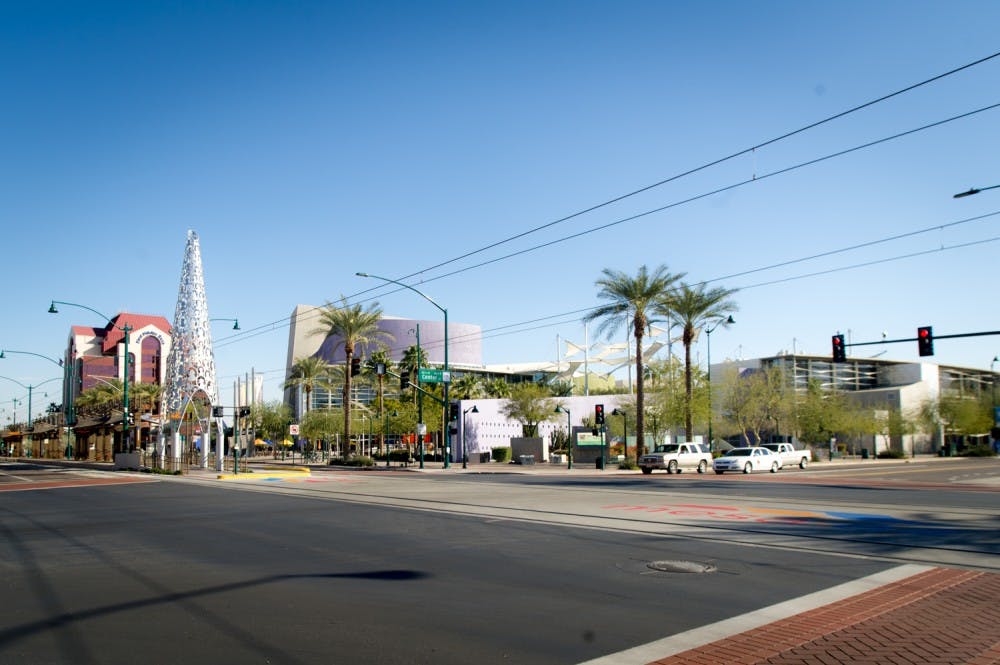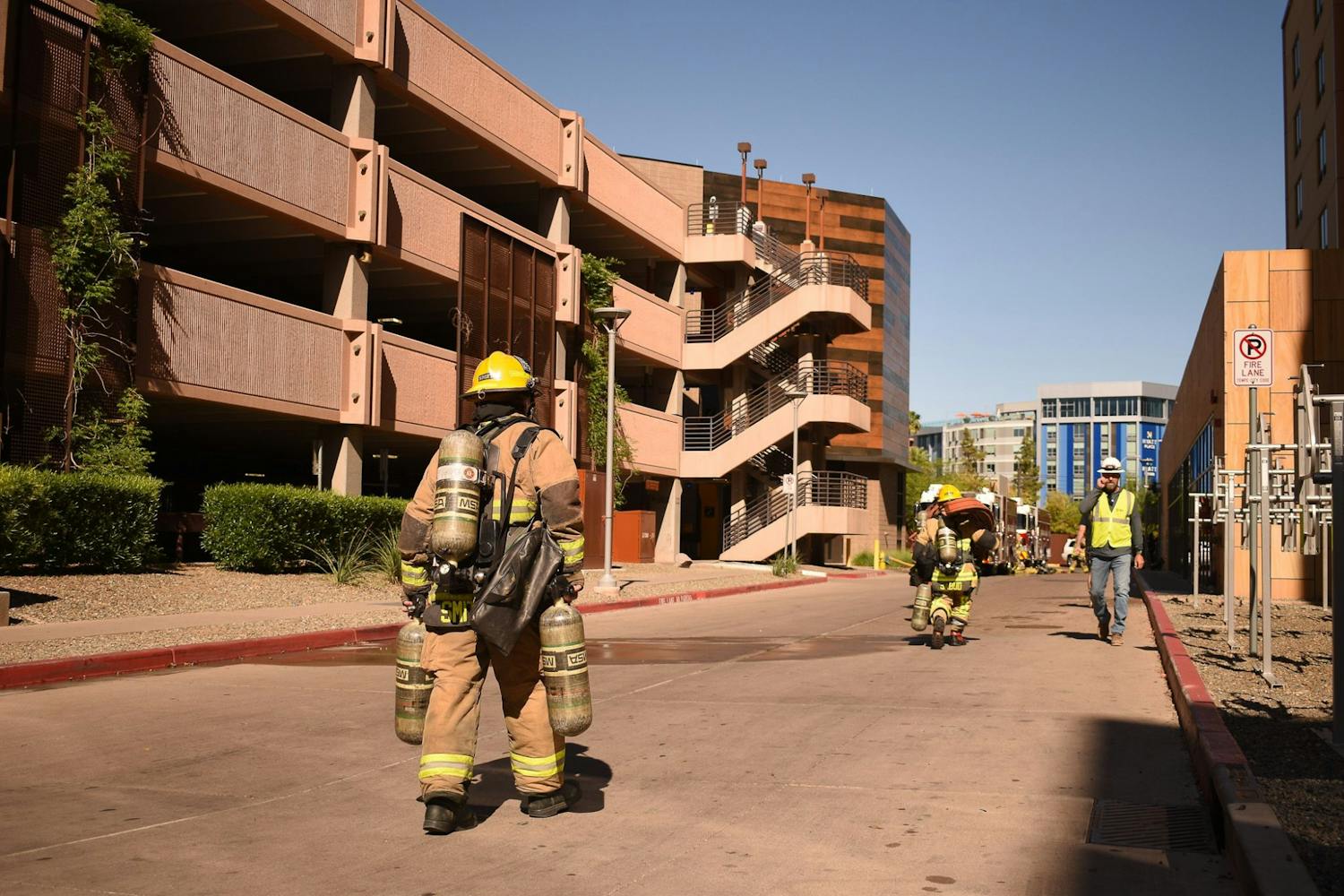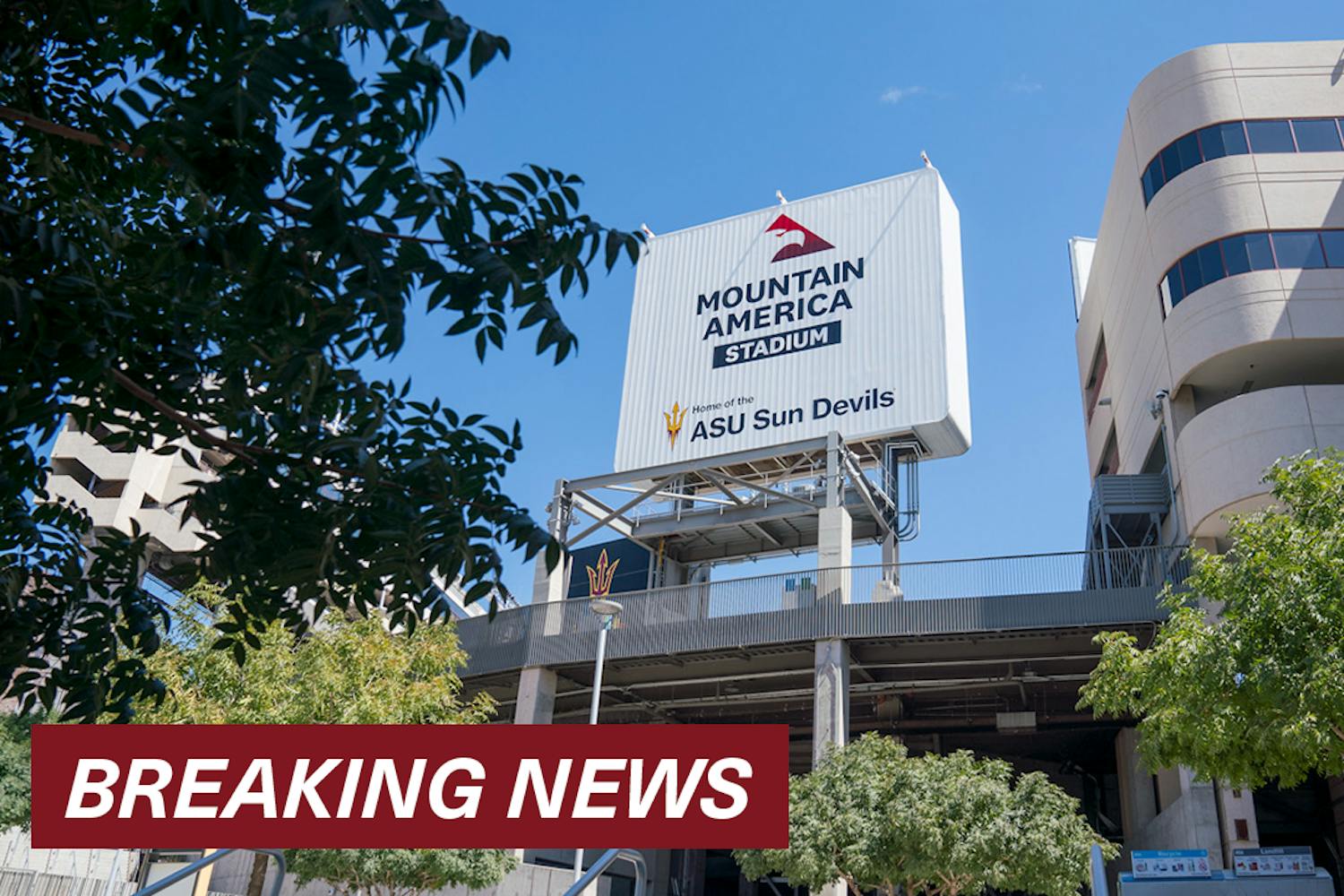Although ASU’s presence has expanded through the Valley in recent years, the outcome of this past election season has halted the University’s planned expansion into downtown Mesa.
This November, Mesa residents voted against the approval of a 0.4 percent sales tax increase, leaving the city unable to use extra tax revenue in order to fund the construction of an ASU Mesa Campus or expand the city’s public safety sector.
The ballot question’s “No” vote won by an 8 percent margin.
Not only would the sales tax increase have helped fund a new ASU presence, but it also would have added new positions and equipment to the city’s public safety services, Mesa Mayor John Giles said.
Read more: Mesa campus expansion hinges on resident approval of sales tax increase
“It would have been two-thirds for public safety personnel and about one-third to pay off the construction of about 300,000 square feet of academic space in downtown Mesa,” he said. “It would have (added) 58 police officers and 26 firefighters.”
However, Giles said the plan to incorporate an ASU presence in downtown Mesa is still in the works, despite it taking a detour.
“We still are pursuing the opportunity with ASU," he said. "There will be a plan B, and that’s in the development stages right now. I don’t have details ... but the idea of partnership between ASU and downtown Mesa is just too good to not pursue.”
Giles said the results of the ballot question would have been shocking had it not been for the unpredictable nature of the recent election in general.
“I can’t say I really was (surprised) just because this election was so unpredictable,” he said. “Had this question been on a different ballot, in a different year, in a different situation, then it would’ve passed, but that’s just my personal opinion.”
Giles said even though ASU’s expansion into downtown Mesa will have to wait, the city is still sprawling with liveliness on its own, partly because of its accessibility from the Metro light rail.
“Downtown Mesa — separate from the idea of bringing ASU — is doing very well,” he said. "It’s going through quite a renaissance ... the ridership of the light rail has exceeded anyone’s expectations, and it’s also been very successful as an economic redevelopment tool.”
Mesa Development and Sustainability Project Manager Jeff McVay shares the same sentiment and said there are still many other developments happening in downtown Mesa.
“I think it’s important to keep reminding ourselves that downtown Mesa is going to be a place where things are going to happen and where redevelopment is going to happen, with or without ASU,” he said. “I think the trajectory for downtown Mesa has always been a positive one. We’ve still got a number of things we’re working on.”
McVay said even though there is an alternative plan in the works, the reason it wasn’t fully developed was because there was high confidence that the question would be approved.
“There was a lot of confidence that the voters would’ve approved the sales tax question,” he said. “So, we didn’t have a plan B in place. But we’re working — looking at other mechanisms that could be possibilities for funding, whether there’s a way to use existing facilities as a way to introduce ASU and slowly build up over time.“
Zane Ellis, ASU economics junior, said the campus expansion would have been cost-effective because of the program opportunities that would have been available.
”Expanding to other campuses means more students … and that means more ability to do reach out programs like how the school’s connected with the Mayo Clinic,” he said.
Ellis also said more job opportunities could have been made as a result of the increased traffic and student population.
Mesa resident James Taylor, who studies chemical engineering at Mesa Community College, said the addition of a performing-arts focused school would have facilitated further growth of downtown Mesa as an artistic urban venue.
“I’ve been going there since I was a little kid,” he said. “They always have statues and art shows and all that kind of stuff. I would consider it an art district.”
Taylor, who is planning to transfer to ASU in 2018, said even though his major would lead him to the ASU Tempe campus, there are many in his community who he knows could make great use out another close, convenient higher-education option.
“A lot of my other friends who like gaming and the arts students — it would’ve been a great opportunity for them,” he said. “It would’ve been a lot closer for a lot of them and that’s a big thing because when you’re going to MCC you kind of save money and try to live at home and stuff like that. I think it would’ve been a really big benefit.”
Reach the reporter at angel.n.mendoza@asu.edu or follow @angelnikolas96 on Twitter.
Like The State Press on Facebook and follow @statepress on Twitter.




